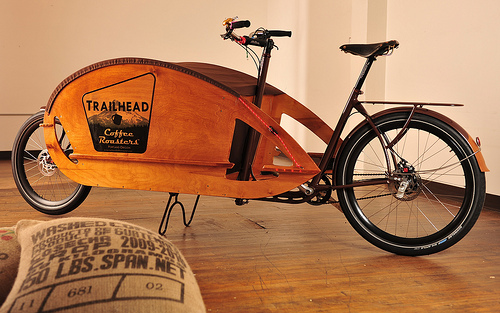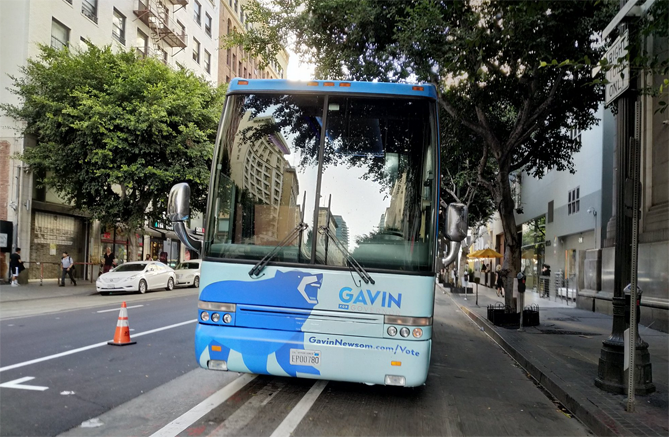
“Sacrifices to the Modern Moloch” a cartoon in the New York Times published January 1922.
Dear New York Times editors, you need to retire your “Wheels” column. At the very least you need to insert, in all automobile coverage, a disclaimer that cars cause climate change, asthma, lung cancer and over 1.2 million deaths around the world every year due to “accidents.” The ghost of your fellow New Yorker Jane Jacobs would also add ugliness and the death of communities, thanks to the insatiable hunger for space cars claim in our urban spaces. Failing to point out these objective facts makes your auto columns little more propaganda.
Where is your bike column? Where is your transit advice column? Where is your walk-ability coverage? Sure, you touch on these issues elsewhere but these subjects have no dedicated column like “Wheels.” Perhaps it’s time to start treating cars the way you might treat cigarettes. NYT editors, would you have a weekly column devoted to reviewing cigarettes? One could easily imagine such a column. I’m sure some cigarettes taste better than others. You’d also have a lot of vape devices (the Teslas of smoking) to review. But I’m guessing you won’t debut a “Smokes” column in the near future.
Taking the cigarette analogy further, your hypothetical “Smokes” column would be wise not to blame smokers for their addiction. Just like those tobacco CEOs, there are real villains in the auto addiction story. While I bike and take public transit I live in a city (Los Angeles) that yoked its future to the automobile in the 1920s. Mostly out of fear for my safety, I’m forced to drive more than I would like by the way the city is designed. So I don’t buy the “we’re all at fault” argument. As Hannah Arendt said, “When all are guilty, no one is; confessions of collective guilt are the best possible safeguard against the discovery of culprits, and the very magnitude of the crime the best excuse for doing nothing.”

German diplomats awarding The Grand Cross of the German Eagle to Henry Ford, Detroit, 1938.
If we’re looking for who to blame we might begin with Henry Ford. Adolf Hitler kept a framed portrait of Ford on his wall and mentions him by name in Mein Kampf, “Every year makes them [American Jews] more and more the controlling masters of the producers in a nation of one hundred and twenty millions . . . Only a single great man, Ford, to their fury still maintains full independence.” Ford returned the favor by publishing a virulently racist and anti-Semitic newspaper that, among other editorial atrocities, serialized a set of articles entitled “The International Jew.” And the Nazi leadership’s ideology was inspired by the worst aspects of Fordism: the alienation of workers and the suppression of unions and democracy.
Speaking of Nazis, you’ve spent the past week breathlessly covering the pre-auction and post auction-kerfufle of the first Porsche. If I were the editor I would have insisted on a paragraph detailing the fact that the Porsche company went on to use Polish slave labor during WWII. Those laborers had a “P” sewn on their uniforms and that “P” stood for “Poland” not Porsche. And would it be snarky to include a paragraph about the tackiness of today’s oligarchs bidding millions on a Nazi car?
I have a proposal. How about a livable cities column? We have a terrific writer here in LA who covers alternative transportation named Alissa Walker. You should hire her and put your auto columnists on a bike in LA to see how it feels. I have an extra bike and helmet . . .
Support Root Simple
In the Greene & Greene Style: Projects and Details for the Woodworker. Legendary architects and designers Charles and Henry Greene created a uniquely American style in the Arts & Crafts tradition, and this book combines a detailed understanding of their design aesthetic with specific shop instructions for re-creating their works. Filled with step-by-step instructions, extensive illustrations, and full-color photographs, the book features several full projects for making replica Greene & Greene furniture complete with authentic details such as ebony plugs and splines, waterfall legs, and curved drawer pulls.





So, according to the NY Times “Wheels” column, self-driving cars would work just fine if it was not for all those people getting in the way and screwing things up. Sounds a lot like some businesses I have known that would also be just fine if it were not for all those customers coming in and causing problems!
Okay… We need to have a chat about this post. I understand your perspective and agree with a good percentage of it. But the overall tone isn’t conducive to constructive engagement or pragmatic change. Here’s a different way of approaching the same material.
Cars were enthusiastically embraced by society a century ago because they solved everyday problems for ordinary people at a reasonable price point.
Cars also created all sorts of new problems for society, but the benefits were determined to outweigh the losses during the honeymoon phase.
Some of the individuals who supported mass motoring were brutal thugs and exploitative masters of industry. But a long list of benevolent figures were equally fond of the rapidly expanding car culture. It was simply the “wave of the future” at the time.
But…
A century later the accumulated externalities of car culture are now tipping the scales farther in the opposite direction.
Many individuals are organizing their lives to be car lite because it just makes for a better quality of life at a lower cost.
Government authorities are starting to choke on the accumulated legacy costs of maintaining all the attenuated road networks so triage will inevitably set in over time.
New technology is already being deployed to track, quantify, and price the externalities of auto oriented development. It’s likely that insurance companies and municipal bond markets will do most of the heavy lifting when it comes to driving people out of their vehicles and toward a different way of organizing their affairs.
But don’t get too smug about the future diminishment of the automobile and its accompanying culture. The tech panopticon that will replace it will have plenty of Fords and Hitlers too. It’s not the machines we create that mold society. It’s human nature. And that never changes.
I don’t know the paper or the column you refer to but if it’s anything like one of the major newspapers here in Melbourne Australia, I suspect the car market is a substantial paying advertiser and revenue would decrease if it disappeared
Bravo! Well said.